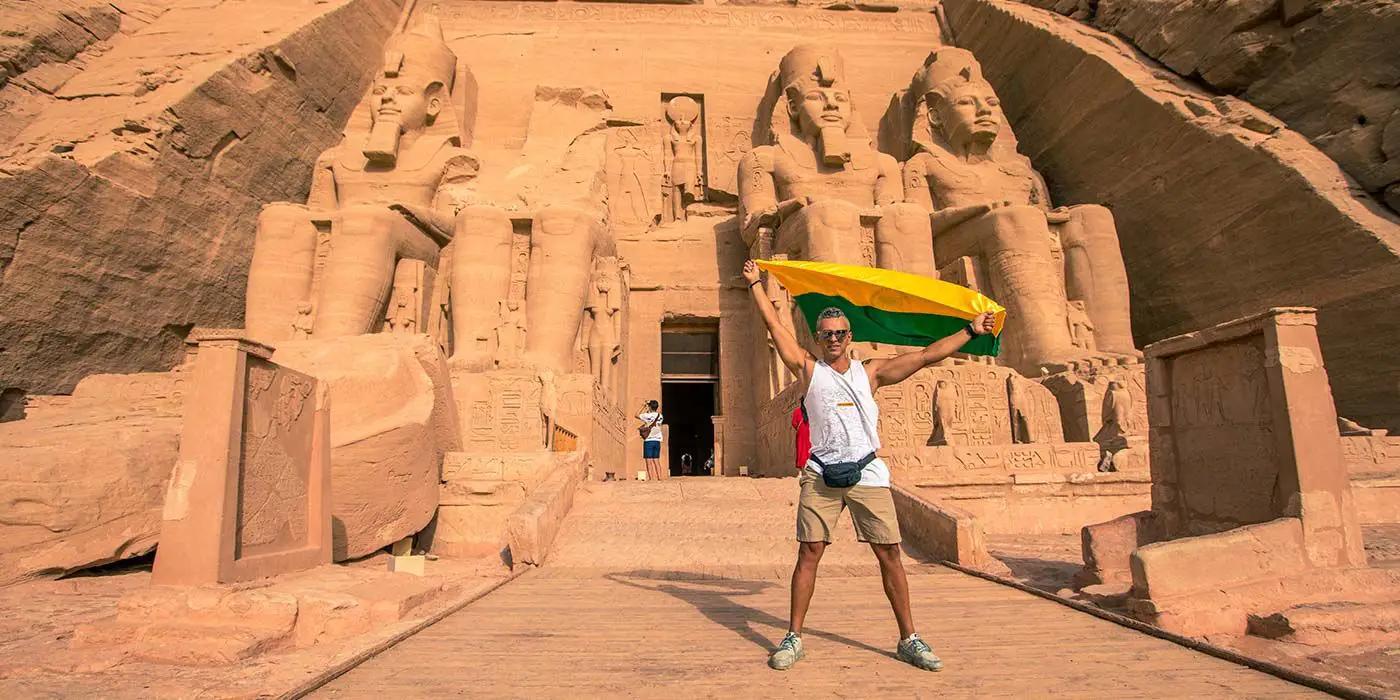
Abu Simbel Temples Egypt
The 13th century BC reign of King Ramses II saw the creation of the mountaintop Abu Simbel Temples. It honors the king's triumph in the Battle of Kadesh and resembles a memorial to King Ramses II and Queen Nefertari. It consists of two temples, the greatest of which is devoted to the three Egyptian gods Achit, Ptah, and Amun at the time. On the façade are four sizable sculptures of Ramses II, while the smaller temple is devoted to the goddess Hathor.
The main temple walkway was not discovered in Abu Simbel until 1813 by the Swiss orientalist J.L. Burckhardt. Together with Italian explorer Giovanni Belzoni, they traveled to the location and discussed their discovery. They were unable to dig into the temple's entrance, though.
History
In 1817, Belzoni tried again, and this time he was successful in breaking into the temple and stealing anything of value he could carry. The temple was entirely relocated to a new position in Aswan in 1960, on top of a man-made hill with a dome-like structure over the High Dam reservoir. The temples had to be relocated to prevent their drowning during the creation of Lake Nasser and the creation of a sizable artificial water reservoir during the construction of the High Dam at Aswan. Ramesses II, also known as Ramesses the Great, and his queen Nefertari were the 19th Dynasty Pharaohs who oversaw the construction of the two huge rock temples at Abu Simbel in the 13th century BCE. It took twenty years to build them, including the time it required to carve the enormous royal sculptures out of rock.
They are regarded by many visitors as the most stunning of the temples built during the reign of the Pharaoh and are often included as a highlight on their journeys around the nation. They are dedicated to the Ancient Egyptian gods Amun, Ra-Horakhty, and Ptah as well as to Ramesses himself.
The temples, which had been hidden in the sand for many years, were uncovered around the start of the 19th century CE.
To prevent water damage during the building of the Aswan Dam in the 1960s, they had to be taken apart and moved. This amazing effort was made possible by the financial aid of a number of nations throughout the world; as a token of appreciation, Egypt gave four temples to the various nations that helped, including the Temple of Debod in Madrid, Spain.
If you choose to spend the night at Abu Simbel, in addition to having time to view the magnificent architecture of the ancient temple complex during the day, you will also have the opportunity to take in the nightly light and sound display (at 6 pm in winter and 7 pm in summer, costs LE 250).
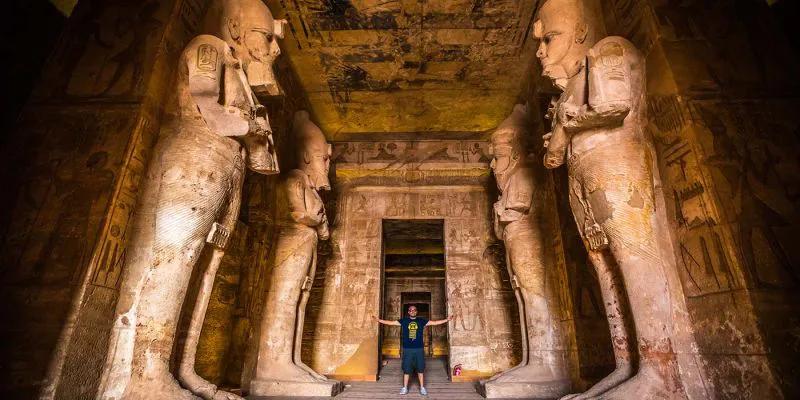
The Temples
Temple of Ramesses II
Ramses II the Great's temple, also known as the Great Temple, is distinguished by its elegant exterior. It is a colossal entrance gate that is shaped like a pylon and is 30 meters high and 35 meters wide. Four enormous sculptures of the seated king, each measuring about 21 meters high, stand in front of it. The representations of the notable ruler are worth examining: the pharaoh wears a classic royal apron (Shendyt), and his straight beard is a representation of the live ruler (in the posthumous images the ruler had a curly beard). In the crowns of Lower and Upper Egypt, there are statues of the king who are portrayed as the god Osiris. The reliefs that line the walls portray scenes of sacrifices and processions of boats carrying pictures of gods, making it worthwhile to travel along their length. The bas-reliefs also depict Ramses II's military triumphs, such as his victory in the renowned Battle of Kadesh. Four pillars of the second hypostyle hall, via which you enter the sanctuary, are painted with sacrifice scenes.
The Nefertari Temple (Little Temple)
There is a considerably smaller temple for Ramses II the Great's wife, Nefertari, right near the larger temple. The practice of constructing separate temples for the queens was uncommon. Four standing pharaoh sculptures and two statues of Nefertari are prominently displayed in front of the building's façade. The composite crown worn by the royal wife is magnificent. It is ringed by cow horns and made of carved sun disks and ostrich feathers. They were a representation of Hathor, the heavenly queen. The goddess was honored at the temple because she kept watching over the queen's security.
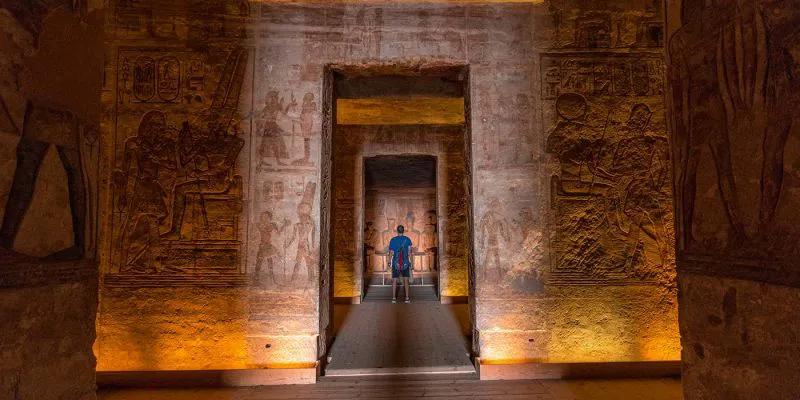
When to Visit
From October to April, the temples are open from 6 am to 5 pm, and from May to September, they are open from 6 am to 6 pm.
We left Aswan at five in the morning and reached Abu Simbel at eight. Sadly, this was also the same time that all the tours came! The groups only remain for one to one and a half hours, which is a plus. After they went, the area was completely deserted, and we had both temples to ourselves nearly entirely. The light shines on the temples in the late morning, making it the ideal photo opportunity.
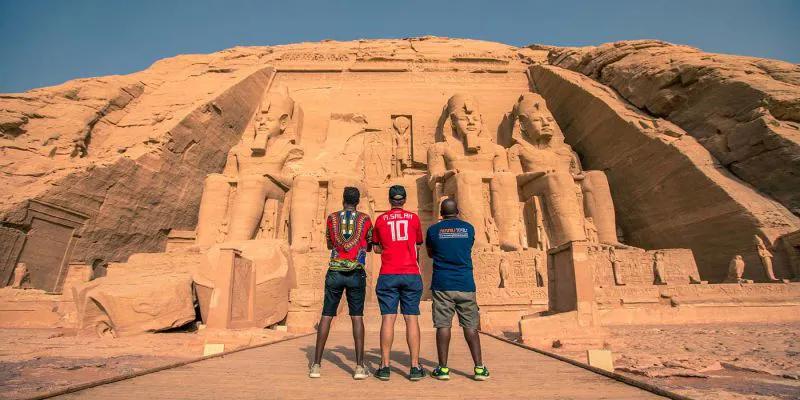
Things to Do
There are plenty of things to do in Abu Simbel. You can go shopping or explore museums in the neighborhood. You can also enjoy the available meals.
Why ponder Abu Simbel's activities for hours on end? There are lots of things to enjoy. As you explore this new area, let the possibilities flood over you. Take to the streets on foot to get to know the neighborhood better. Discover your ideal memento at a small boutique, or rediscover your complete style at your new favorite gallery.
Take a rental automobile out of the city and into the vast blue yonder. The pace and bustle of contemporary life might sweep you away as you immerse yourself in the ordered chaos of a modern metropolis, or you can sample homemade jam at a rest stop along a forgotten highway.
Join Our Abu Simbel Tour Package Here Or Tailor-Make Your Own Dream Trip Here!
related tours
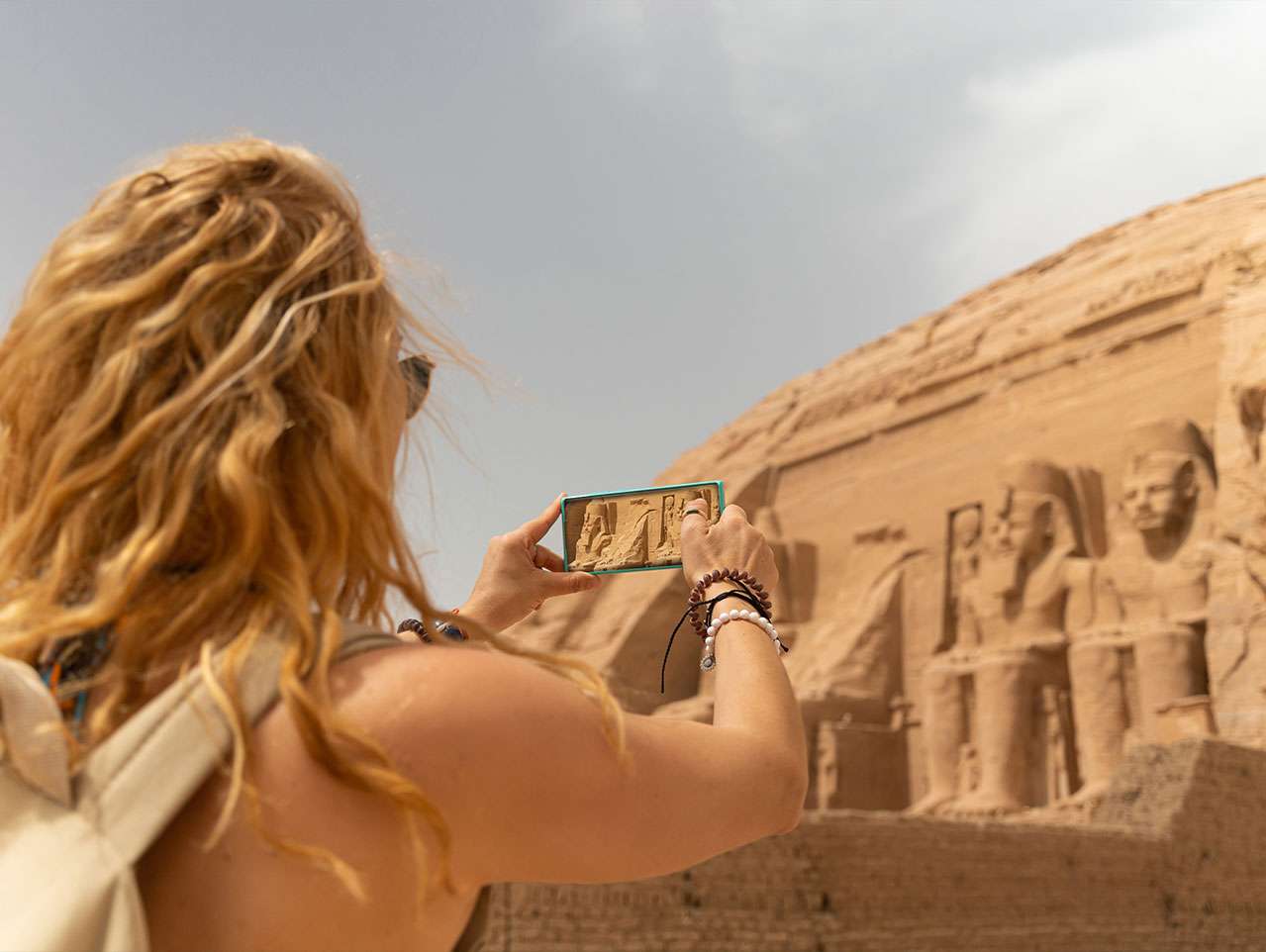
Best Travel Packages to Egypt with Abu Simbel
8 Days / 7 Nights
From
$ 1445
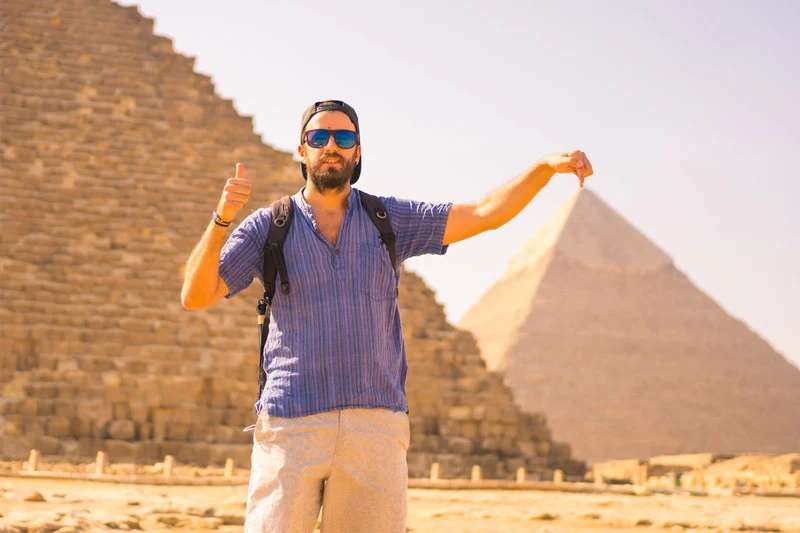
Egypt Vacation Package
12 Days / 11 Nights
From
$ 1699

Treasures of Egypt Travel Packages
7 Days / 6 Nights
From
$ 1280
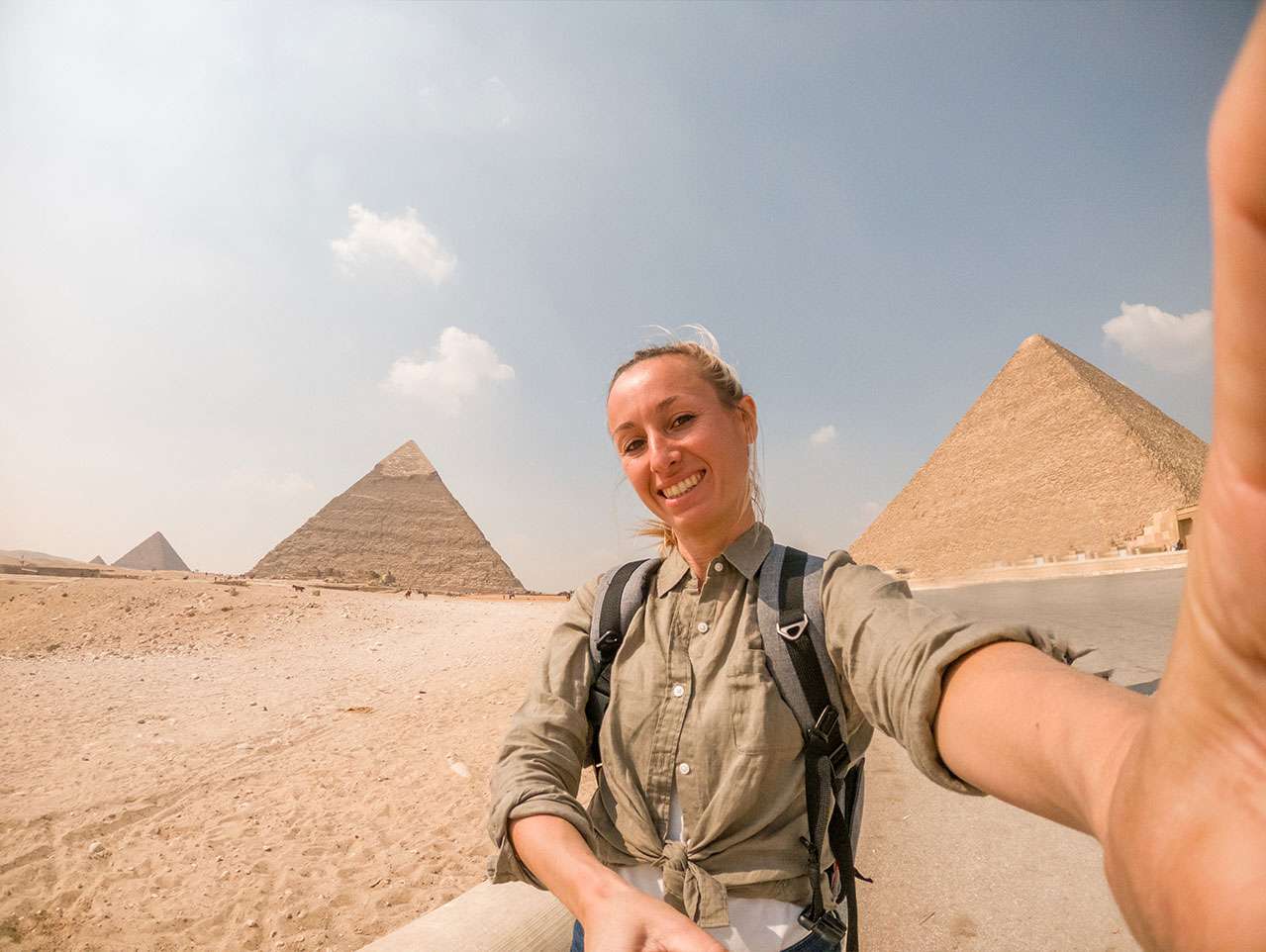
Pyramids and The Nile
8 Days / 7 Nights
From
$ 1755
